I interviewed my friend Arjun. Check it out here.
2013 Scouts in the Field
Edupreneurs Selection Methodology
The whole reason I am in India is to assist with recruitment and operations of a business accelerator, “Edupreneurs” for education entrepreneurs whose target market is low income students in India. To understand the accelerator a bit more, take a look at this video:
The lion’s share of this post will be interesting to entrepreneurs and people working in social enterprise and impact investing. For those of you interested in the companies we’ve selected, stay tuned for upcoming blog posts.
It turned out to be a very selective program. We received over 120 applications from quality education startups, but could only select fifteen for our program. The selection committee incorporated a number of different perspectives and backgrounds- important so we don’t miss anything, but difficult because in the end, we all needed to agree or compromise. There was often tension between an entrepreneur having a great education solution, and that solution being investable. After all, we do need to see a return on our investment in a “patient capital” timeline.
How Did We Select our Fifteen Companies?
We considered each company against a set of six criteria that Village Capital identifies as critical to success. Village Capital has run over fifteen of these accelerators, developing their selection process, curriculum and expertise over four years. Since the $75,000 seed stage investments are pre-committed, we had to make sure that we would be happy investing in any of the companies we selected to participate.
The Six Criteria:
1. Customer Discovery/ Development
Who are the customers? How does the company know that the customer wants the product? It is one thing to provide a solution, but if no one wants that solution, or if the company is marketing to the wrong customers, then they are less competitive. We want to see that a company has done sufficient research and pilots to verify or discover their target market. This even applies to companies with founders who have substantial experience in the sector. “Knowing” the target market isn’t enough, we want proof to back up sound logic.
2. Team
How strong is the management team? Are there any knowledge or experience gaps in the team? What is the plan to fill the gaps? With early stage investing, it is often said that you are investing in the entrepreneur, not the company. This is because there isn’t much due diligence to be done when a company hasn’t been around long enough to generate data and expose weaknesses. We want to see founders and executives with substantial sectorial and target market experience, combined someone who knows how to get things done. We want to see companies that recognize gaps and have plans to fill them. Don’t tell me that you are ready to scale when your company is a group of silent-warrior tech dudes- who is going to get out there and build the relationships critical to growth?
3. Product Refinement
How was the product developed? How many versions were tested with customers? We want to see a stellar product that was tested extensively with target-market customers, incorporating their feedback into new versions. We want to see that the company focused on what they do best in order to go to market.
4. Financials
This is where things are tricky because in early stage enterprises, most of the numbers are theoretical. Entrepreneurs will predictably inflate their projections- it’s great that you think you’ll have a million customers after just one year of operation…but you probably won’t. We want to know what the cost of production is, what the price point is, where the breakeven is, and how much funding is needed to sustain and grow the company. It is also important for us to know how you arrived at the price point. A business can’t say something is ten dollars because that’s what is needed to recoup costs plus profits. It needs to be ten dollars because a market study said that’s what customers will pay. All the other projections must be based on realistic logic and as much data as possible. We love data.
5. Scaling and Impact
What is the plan for scaling and what are the targets? What positive social impact will the enterprise have? How will that impact be measured? Is the impact built into the business model? We want to see that the business can scale. A model that depends heavily upon specific individuals, or too much skilled labor may not be scalable fast enough or large enough even for patient capital.
Scale doesn’t stand alone for impact investors- as the name indicates, we need to see measured impact. This is often overlooked, especially in the education sector. We want to see a product that has built in, measureable impact, preferably with back-end analytics. For example, in a low cost private school, are the students regularly tested, if so, against what standards? How do these measurement results affect change in teaching methods? It is also important to consider how the impact is built into the business model. Is the customer the beneficiary? If not, is the business structured in a way that mission drift won’t become a problem? Cross- subsidization models are often difficult because it is so easy to concentrate on the higher-end market at the expense of the lower-end market where the impact actually happens.
6. Exit Strategy
How will an investor get their money back? Early stage companies often haven’t thought much about this, but we want to know the options or the vision. Don’t tell me you’re going to have a successful IPO, because you probably won’t. If a company doesn’t know, we just want a walkthrough of what’s been considered or ruled out and why.
I Sat Down with Arjun Bhat– These are his Insights on India
I Sat Down with Arjun Bhat– These are his Insights on India:
Arjun Bhat, founder of Travspire, offers tips to finding meaningful travel experiences in India.
Pondicherry: A wonderful former French town in Tamil Nadu.









Pondicherry: A wonderful former French town in Tamil Nadu.
Weekend road trip to Zanzri!
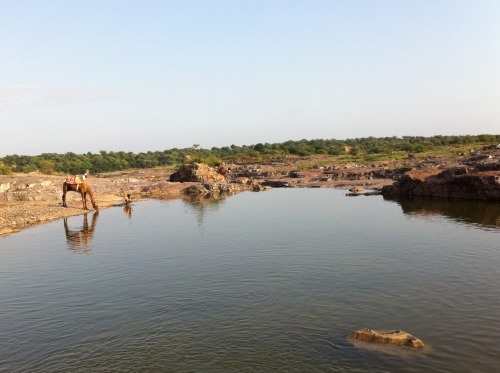
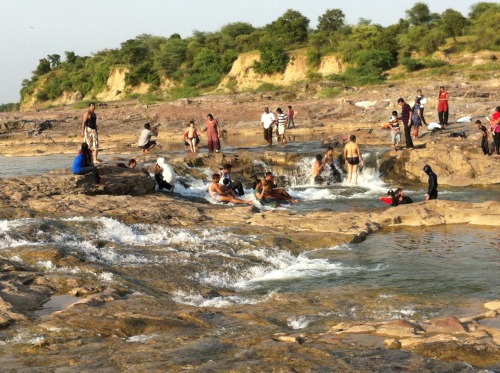
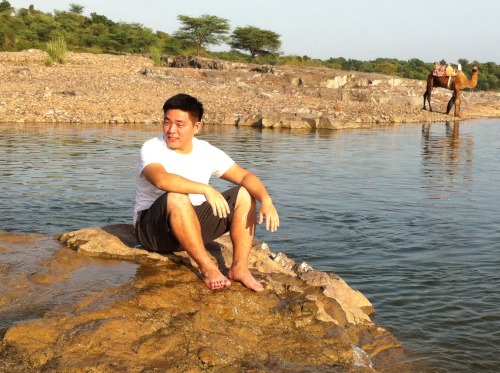


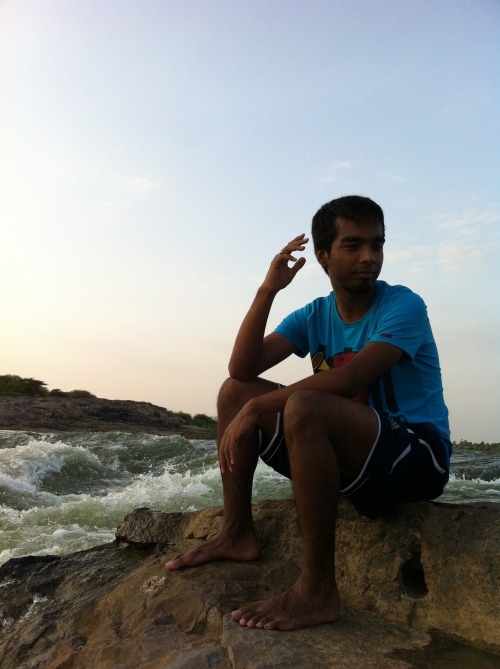

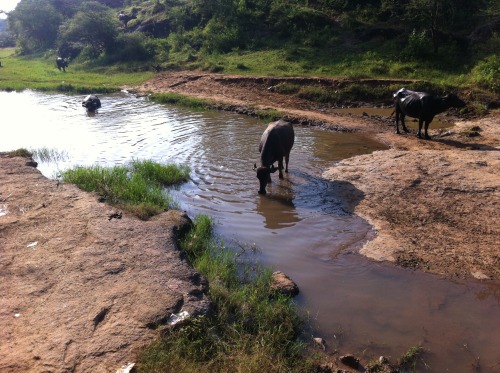
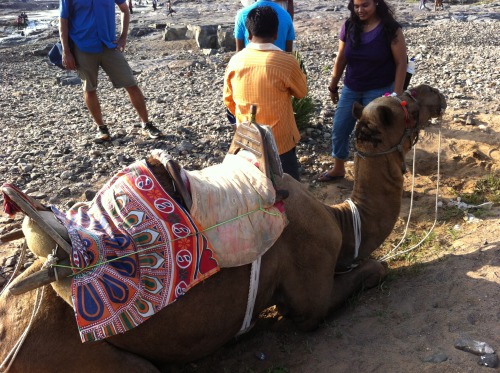

Weekend road trip to Zanzri!
Cultural Exchange
I’ve noticed more and more during my time here what an advantage it has been in my life that I was raised in a multicultural environment, where I was exposed to people from all sorts of backgrounds. In my time here, I feel like I’ve really been able to draw a lot from my personal experiences as an Asian-American as well as those from having close Indian-American friends. I guess it’s only natural that people here would compare me to other foreigners (particularly Americans) that they’ve met, and apparently I’m relatively more Indian compared to them! From being used to a completely different set of pronunciations, to understanding the respect given to elders, to my willingness to try new foods (so long as they destroy my lactose-intolerant bowels), I’m feeling strangely at ease.
One of my favorite forms of cultural immersion and exchange comes in the form of food. My most recent exciting food experience has been eating a true Gujurati thali.

A thali means a “plate” in general, and the way they do it in Gujarat is to put out a spread of several different dishes on everyone’s plate and continuously serve you until you wanna roll over and just lie down on the restaurant’s floor from a combination of satisfaction and exhaustion. I like to think I eat pretty quickly, but it’s at a whole new level here. The joke is that Indians will “snatch” your food if you’re slow, and I occasionally find myself snatched from. At the thali restaurant, the food came at such an incredible pace that I felt somewhat overwhelmed by the rate at which I had to shovel food into my mouth and try to fend off the servers who didn’t seem to want to take “no” for an answer.
Now an exchange isn’t complete without a transfer of value from both sides, so I tried to do what I could to introduce my office to a little bit of Korean flavor at a potluck this week. Freshly stocked with my mom’s care package, which included boatloads of ramen, I made my version of rabokki, but without any dduk (which I guess it makes it just ramen in ddukbokki sauce…). I had my fingers crossed that I didn’t botch the experience for everyone, but it was pretty well received!
I realize I talk very little about actual work, so here’s a little something about one of the companies we work with. Aakar Innovations is a social enterprise that works to find grassroots innovations and use them to create an improved, sustainable lifestyle for people in rural India. While that official description allows them much room for growth later on, for now, their flagship product is a pack of cheap, sanitary pads for women. It is created with biodegradable material and sells at a price point far below that of leading brands. The government produces a cheaper option that is made of materials with much lower quality. Aakar has positioned itself as an affordable, comfortable option for pads in rural communities where healthcare information is not always as well understood and distributed. It’s just one of many examples of some cool work going on here that I’m glad to be a part of, even if I’m not directly involved.
White Girl, the World Does Not Revolve Around You
Too much time has been spent on this subject, so I’ll make my opinion short and sweet. For those of you who haven’t heard, there’s been an awful lot of hullabaloo over this chick, Michaela Cross’, blog post about her whoas in India, that sadly ended in a mental breakdown. There have been several responses from other white girls who have traveled in India and did not have bad experiences. Here’s my take:
I would like to preface with the fact that I do feel bad for Michaela. She clearly has had a difficult go at it, and I hope she recovers in full. However, this discussion is somewhat irrelevant in my mind. Listen white girls, the world does not revolve around you. If you don’t like being stared at in India or you’re uncomfortable, GO HOME. If you dig India, stay! This conversation should not be happening at all.
What is actually relevant is the safety of Indianwomen in India. So, let’s stop talking about the poor white girls, and actually talk about ways to make India safer for its own women.
Pics from Hippocampus Learning Centers





Pics from Hippocampus Learning Centers
Any Day That Begins in Strife Must End in Ice Cream
Oh man. What I DAY I had yesterday. Like most things in India (that I’ve found so far), yesterday was a juxtaposition of wonderful and frustrating.
I was very excited to do my first field visit at Hippocampus Learning Centers— one of Unitus Seed Fund’s investees. The great people at HLC set me up to go with another girl who was interested in seeing their work. She set up the cab to get us there and I coordinated with the field manager, Paramesh. We aimed to leave at 7am to miss traffic leaving Bangalore. All is well and good, right?
Well then the cab was TWO hours late. I repeat: TWO hours. He apparently got lost getting to the other girl’s place and decided to give up and go home (WHAT!?). Instead of flying through Bangalore at 7am we crawled through the city at 9am. Not only that, but this cabby had the audacity to take the route around the city because it “had less traffic”. Listen buddy, this whole city is just one crazy parking lot, it’s best to go the most direct route. All in all it took us about 4 hrs to get there instead of two and a half. UGH.
Once we got there, everything changed. It was really fun to spend time in the classroom with the kids. The teachers were all super great and engaging and I was SO impressed by how much these little suckers knew. They were counting to 50, deciphering odd and even numbers, spittin’ some English vocab words, and singing some pretty adorable songs. More than anything, they were all super stoked to be there and to be learning. Seems HCL has a good thing goin’.

Promptly after leaving the wonderfulness of cute kids at HCL, our cab saga continued. He got two flat tires, stop about a million times and hit a motorcyclist (who was okay). When we finally arrived back in Bangalore he thought it would be a good idea to try to rip us off. We had agreed to pay rs 2,200 for the day and he was trying to charge us rs 3,500, because he went 90kms over. Oh, was that while you were getting lost and going home? Or when you took a tour of Bangalore traffic at 9am? Yea right dude. We handed him is rs 2,200 and walked away. Of course he followed, arguing continued and he decided to lodge an “official complaint” against us. Good luck fella. Oh cab driver, why must you be such an asshole? I need ice cream.
I got my “cream and cookies” and sadly walked down Brigade Road. By the time I reached my flat I was feeling much better about life, cab drivers and the prospect of getting a beer with friends. What a day. But it was nothing that a little ice cream couldn’t solve.
Back in the US of A
Participating in the Frontier Market Scouts Program was truly one of the most amazing experiences I’ve had at the Monterey Institute so far! The training was practical and insightful and Maya Mountain Cacao was an ideal placement for me to learn and contribute. The company is a perfect example of a triple bottom-line enterprise making commendable strides in all three areas (people, planet, profit). Scouting for Village Capital provided an opportunity for thoughtful consideration of the social enterprise landscape across southern Belize. All of the connections I made were with inspiring individuals who love their country, its resources, and its people and who want to capture and preserve Belize’s natural and cultural uniqueness while bringing needed economic development to their communities. And though Belize may not be VilCap Accelerator ready just yet, I would advise keeping a close eye for big things are yet to come. The people I met across Toledo are strong, determined, and hard working. Thanks to MMC, I learned first hand that great social enterprises are successful when dedicated individuals unite over a common mission for a greater cause.
I want to thank the MMC team for an incredible summer, for letting me work beside you and with you, and for sharing with me your beautiful Belize!
Gettin around A-Town
It’s crazy to think that I’m already closing in on having been here for a month now…and I still haven’t seen all that much of Ahmedabad. This must be rectified at once, but the past week or so has been a bit of a start. I had three main episodes of exploring different parts of the city that were all exciting in their own ways.
Farm House Party – A couple coworkers and I were invited to attend a party at a farm house a little bit away from the city. Riding a car for the first time in weeks (I was kind of getting used to the auto rickshaws!), we drove away from the city to find this farm house. In India, since almost everyone lives in a city, some of the more wealthier families will also have a “farm house” where they can go and spend the weekend to get away from the hustle and bustle of daily life. It’s difficult to have a large house downtown given the sheer numbers of people in each city, so it makes a lot of sense to me that you would have a separate little getaway that’s close enough to get to pretty easily. I met a lot of interesting people at the party, a good number of whom were foreigners like myself. I found that I was expecting that everyone would be there for a short term gig like myself, but a good number of the people I met were there for real work. Probably shouldn’t have really blown my mind, but it did! I just wasn’t used to the idea of people following jobs to a different country, even though that’s exactly what countless immigrants do in the US. Much respect to immigrants! Of course there are some other exciting details from that night that will go unmentioned here (there may or may not have been a run in with the law…) that you can ask me about later haha
The Statue Slum –

While exploring the city a bit more over the weekend, we ended up driving through a particular slum where the streets were LINED with makeshift stalls, packed with statues of Ganesh, one of the Hindu gods that is in the form of an elephant. Next week is Ganesh Chaturthi, a festival where these statues will be thrown into bodies of water and will dissolve, symbolizing his return from the earth after removing the obstacles and unhappiness of his devotees. It was kind of amazing to see these huge statues that I would normally associate with being wealthy being mass produced by generational craftsmen in a rundown part of the city. It’s hard for me to capture the full effect with just this picture, but try to imagine blocks and blocks of dingy, narrow streets where there are nothing but huge Ganesh statues on either side of you.
Manek Chowk –

Manek chowk is huge outdoor late night street food spot located in old city (every major city in India has an “old city” and a “new city” built around it) that essentially is a conglomerate of various vendors working together to provide people with the full compliment of unhealthy, yet delicious food options. It was quite bustling last night, and I could understand why! The food was pretty amazing and is exactly what you would want in your late night food options. We ended up ordering a couple pav bhaji (which seems like Indian chilli served with spiced garlic bread); a crazy looking pizza; a dosa; and double decker sandwiches made of buttered bread filled with chocolate, cheese, and pineapple (pictured below). Dude….dude. Yeah, I’m totally going back.

What Makes a Pee Wall a Pee Wall?
There are many things that I was not anticipating when I arrived in India. No one told me about the Indian head bobble. No one mentioned I would need to practice my Indian accent to communicate with auto drivers. And no one told me about Pee Walls.
If you spend a day walking around Bangalore, you will see at least 5-10 men peeing on walls. Just whipping it out and taking a piss. Oh the joys of being a man. However, what is SO interesting to me about this, is there are designated Pee Walls. I kid you not. You can tell it’s a Pee Wall by A. the smell and B. the fact it says “Do not pee here” (illustrated below). What I’m so curious about is how these Pee Walls come to be? What makes a good one? The one closest to my house is the wall of an all-girls Catholic school.

Here are some general things I think any good Pee Wall has.
1. It must be on the left side of the road, so auto drivers can pull over and get out with ease.
2. There must be ample sidewalk space so that the man doesn’t have to be on the road while he does his business.
If anyone else has some great insights on what makes a Pee Wall a Pee Wall, please let me know. I’m very curious.
Adventuring in Hampi. We rode two- wheelers and got caught in a…







Adventuring in Hampi. We rode two- wheelers and got caught in a Monsoon. Saw lots of temples and of course, got in some quality time with an elephant
Settling In
Time is already flying by. By this time tomorrow I will have been in Haiti for three weeks. I am starting my second week of work, and I am gradually getting in the swing of things. It is so exciting to read and hear about the different types of business that are proposed here in Haiti. Among them are two agricultural projects that aim to improve the livelihoods of farmers. One proposes to grow castor plants in order to use the oil in natural hair care products. The other aims to grow potatoes in the country’s mountain region, process them, and provide their nutritional value to school age children for lunch.
During my down time I spend time with my family here whom I sparingly get to see otherwise. Though I proficiently understand Kreyol, speaking it is another story. Born to Haitian parents and living in America doesn’t make you an expert in culture, history, way of life or language. So as I adjust and adapt, I am soaking in my surroundings and the warm warm sun.
Of Firangi and Friends
So it’s been over a week since my last written post, and I’m attributing that mainly to several medical maladies that sprung up over the last week. First, it was a nasty abscess right at the intersection of my hip and butt, followed by getting sick in a more traditional sense, and ending with my current heat rashed state. None of these are all that harmful to me, but the first two things took me to the hospital to make sure they didn’t become issues than they were. Luckily my blood test came out negative for malaria (celebration!) and was determined to be another instance of what they just simply call “viral.” Yeah, I don’t think anyone knows what “viral” really means. My current state is that the parts of my body that are exposed the most — my arms and face — are turning pink/red with this slightly prickly rash. Sigh, one of these days I’ll be able to have a normal, healthy day again.
The word “firangi” means “foreigner,” and my coworkers taught it to me so that I would know if someone on the street was calling me that. The closest comparison in terms of connotation appears to be “gringo” as used in Latin America. As a firangi myself, I tend to pick out others of my kind whenever I walk around. Sometimes in the back of mind I exclaim “white people!” in a gleeful manner because just having some racial diversity around makes me feel more at home. There aren’t a ton of East Asians around, but there are actually some very Asian-looking Indian populations, mostly located on the eastern part of the country. Because of this, my coworkers said I could probably get confused for being just another Indian if I don’t show that I’m out of place. I decided to test this out at a cafe where we were meeting some new folk. One guy began asking everyone their names and where they were from, so when it got around to me, I introduced myself as Joony from Pune. Without flinching, he just moved on until my coworkers did a double take to see if they had heard me correctly. They knew I was from the US, but I had completely fooled the new guy. Success!
Sometimes it gets lonely as a firangi, so I met up with the Ahmedabad expat group this past weekend, and we all exchanged stories of adjusting to life in India. It was an eclectic mix of people from different parts of the world from different walks of life, but there was something about the solidarity from our firangi-ness that was refreshing for me and helped put my experience thus far into better focus. It was a fun time and I’ll be looking forward to our next hangout.
I’m going to go take care of my heat rash now, so until next time!
